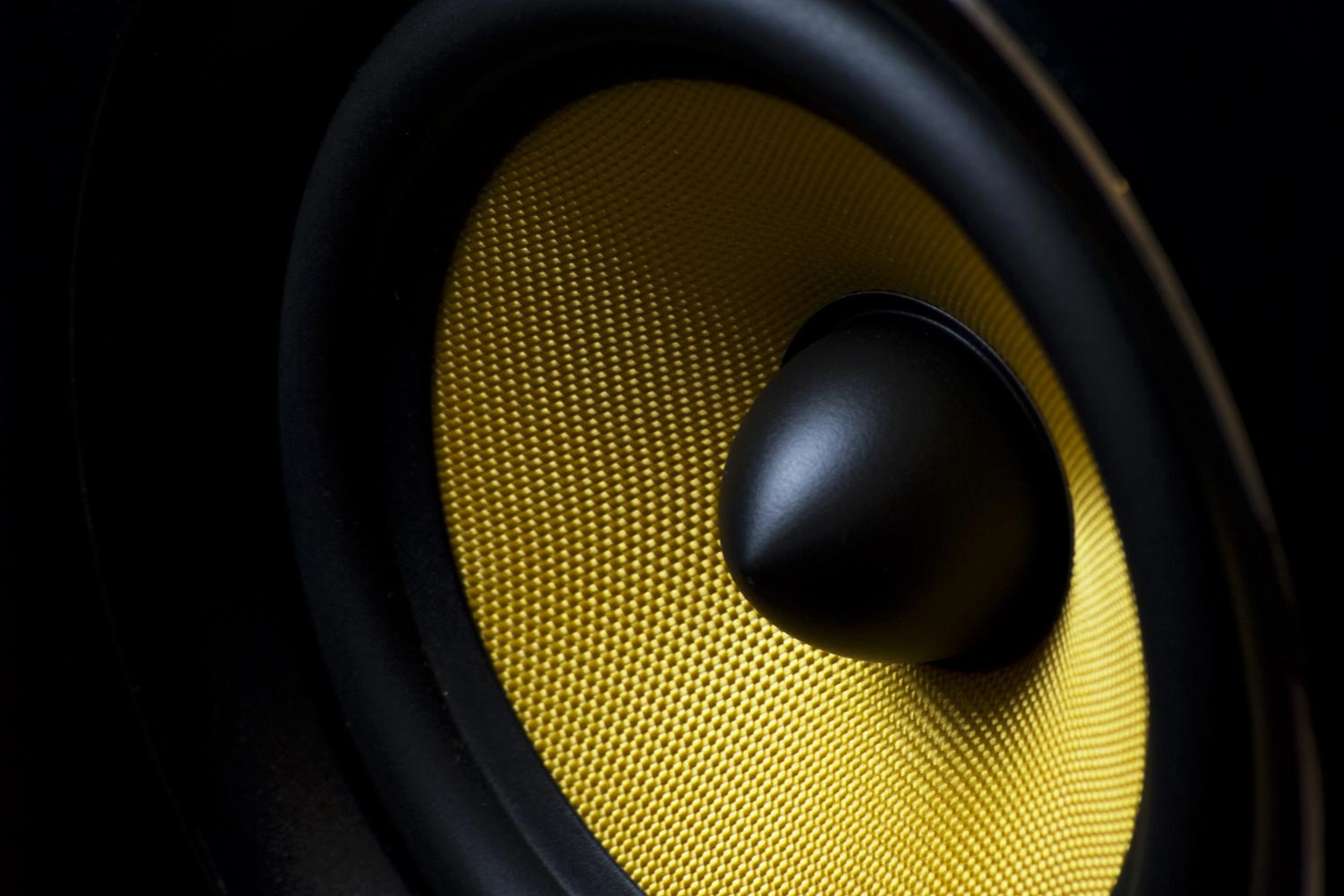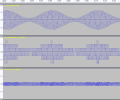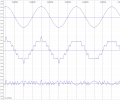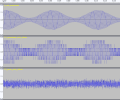dasdoing
Major Contributor
on a sidenote https://www.audiocheck.net/blindtests_16vs8bit.php

Interesting. And I have only seen it referred to as an error, not noise, in the photo community (digitizing photons as they hit image sensors). Even in audio I'm seeing a lot of references to quantization error, which makes sense because it's not introduced from outside.All the engineering societies and references I know use "noise" for quantization noise.
I am only vaguely familiar with it in the photo world so maybe they use different definitions? I am sure they use different standards for reference.Interesting. And I have only seen it referred to as an error, not noise, in the photo community (digitizing photons as they hit image sensors). Even in audio I'm seeing a lot of references to quantization error, which makes sense because it's not introduced from outside.
In audio it sounds like noise and is therefor called noise, in photography it doesn't look like noise though but instead looks more like bands if you look in gradients like a sky for example, so it's called banding instead, or posterization will do as well.Interesting. And I have only seen it referred to as an error, not noise, in the photo community (digitizing photons as they hit image sensors). Even in audio I'm seeing a lot of references to quantization error, which makes sense because it's not introduced from outside.
I also like the term "error". And then "distortion" if the error is correlated to the signal and "noise" if the error is not correlated to the signal.Let's stick with not using the term "noise" because it leads to confusion.
For me at the end of the day, potayto potahto.I also like the term "error". And then "distortion" if the error is correlated to the signal and "noise" if the error is not correlated to the signal.
Then you can say: "Quantization produces an error. This error could be a distortion. You can use dither to turn distortion into noise." and everything is clear and unambiguous.
But I guess that ship has sailed and "noise" seems to be the most popular replacement, sometimes with added correlated/uncorrelated.
The references I cited (IEEE Standards) distinguish quantization noise from other error sources that cause distortion (e.g. harmonic, intermodulation, INL/DNL, and so forth). If you perfectly quantize the signal there will still be quantization noise, but no other errors (distortion).I also like the term "error". And then "distortion" if the error is correlated to the signal and "noise" if the error is not correlated to the signal.
Then you can say: "Quantization produces an error. This error could be a distortion. You can use dither to turn distortion into noise." and everything is clear and unambiguous.
But I guess that ship has sailed and "noise" seems to be the most popular replacement, sometimes with added correlated/uncorrelated.
You can rearrange that equation as: the quantized signal (yellow) is the sum of the original (green) and the error (red). So what the DAC outputs (yellow) is a mix of the original and the error.I appreciate the red line is the difference between the original and the quantized signal
If not "noise", then what do (or did) you think this "just modifying" should do to the signal?I just don't understand why quantizing is creating "noise" when in my head it's just modifying the original signal.
If all we are left with is the quantized signal then we can't. If we have the original lying around then we can subtract one from the other and see what's left.Which I guess then begs the question, how do we know if the signal contains noise or is in fact what it was supposed to sound like in the first place?!

 www.audiosciencereview.com
www.audiosciencereview.com

 www.audiosciencereview.com
www.audiosciencereview.com
You can rearrange that equation as: the quantized signal (yellow) is the sum of the original (green) and the error (red). So what the DAC outputs (yellow) is a mix of the original and the error.
If not "noise", then what do (or did) you think this "just modifying" should do to the signal?
If all we are left with is the quantized signal then we can't. If we have the original lying around then we can subtract one from the other and see what's left.
I don't know if it helps but I tried answering similar question here:

Quantization Noise 101: Where does SNR about 6N dB come from?
This post attempts to explain where the SNR = 6N dB approximation comes from. ASR does not have the symbol font available, and after an hour or so of trying to fix things, I ended up just pasting the whole thing as an image. Sorry about that! I did attach a PDF of the original.www.audiosciencereview.com

Quantization Noise 101: Where does SNR about 6N dB come from?
Thanks for the pdf file. The equations are a bit too low res on the forum post. We really need a build in LaTeX editor on the forum :) There is a MathJax plugin for XenForo. Seems to be unmaintained, but may still be worth a try.www.audiosciencereview.com
Well, I should have put "not yet quantized" in quotes. It was a digital file, so of course it was quantized. But I used high enough bit-depth to pretend (or simulate) that it was not quantized.How does one capture the data necessary to plot a signal such that it can be shown at the moment when it's sampled but not yet quantized, as you have shown in the links you posted above (here's a screenshot)?
sox -r44.1k -n -b16 A_not_quantized.wav synth 3 sin 1k synth sin amod 20 20 norm -4sox -D A_not_quantized.wav -b8 tmp.wav vol .03125
sox -D tmp.wav -b16 B1_quantized_no_dither.wav vol 32sox -D -m -v1 B1_quantized_no_dither.wav -v -1 A_not_quantized.wav B2_error_no_dither.wav

sox A_not_quantized.wav -b8 tmp.wav vol .03125
sox -D tmp.wav -b16 C1_quantized_with_dither.wav vol 32
sox -D -m -v1 C1_quantized_with_dither.wav -v -1 A_not_quantized.wav C2_error_with_dither.wav

]$ sox B1_quantized_no_dither.wav -n stats
...
Bit-depth 3/3
]$ sox C1_quantized_with_dither.wav -n stats
...
Bit-depth 3/3Well, I should have put "not yet quantized" in quotes. It was a digital file, so of course it was quantized. But I used high enough bit-depth to pretend (or simulate) that it was not quantized.
Here's how the files can be generated (files in attachment). For our pretend-not-quantized signal I'll use 16-bit (-b16). To have a bit more interesting waveform I'll generate 1 kHz sine with modulated amplitude:
Convert (without dither) to 8-bit (-b8) and reduce volume x0.03125 (that's 1/32 and 32 = 2^5). This will reduce bit-depth to 3 bits (8-5=3). Then increase the volume back x32.Code:sox -r44.1k -n -b16 A_not_quantized.wav synth 3 sin 1k synth sin amod 20 20 norm -4
Subtract one from the other to isolate the quantization error:Code:sox -D A_not_quantized.wav -b8 tmp.wav vol .03125 sox -D tmp.wav -b16 B1_quantized_no_dither.wav vol 32
The files look like this:Code:sox -D -m -v1 B1_quantized_no_dither.wav -v -1 A_not_quantized.wav B2_error_no_dither.wav
View attachment 365522View attachment 365523
The same with dither (remove -D when reducing volume):
View attachment 365524View attachment 365525Code:sox A_not_quantized.wav -b8 tmp.wav vol .03125 sox -D tmp.wav -b16 C1_quantized_with_dither.wav vol 32 sox -D -m -v1 C1_quantized_with_dither.wav -v -1 A_not_quantized.wav C2_error_with_dither.wav
And just to confirm that B1 and C1 use only 3 bits:
Code:]$ sox B1_quantized_no_dither.wav -n stats ... Bit-depth 3/3 ]$ sox C1_quantized_with_dither.wav -n stats ... Bit-depth 3/3
I won't argue that I interpreted it correctly, but I took that phrase from: JAES vol 52 no 3 / "Pulse-Code Modulation - An Overview" - Lipshitz, VanderkooyDither (noise decorrelation) is another (large) topic and, while it can spread correlated distortion spurs, does not in general "turn distortion into noise", at least per my standards.

p.208,209
The correlated distortion lines of Fig. 5(d) have been
turned into an innocuous white-noise floor by the TPDF-
dithered quantization.
p.209,210
It should thus be clear, and it is important to
realize, that the distortion has actually been converted into
a benign noise. It is not a question of noise masking or
“covering up” the distortion.

IMO this is not the place to debate how Lipshitz and Vanderkooy differ in their definitions from the IEEE. They treat the quantization error as highly-correlated to the signal, which is true to the extent that the signal and sampling frequency are correlated, but in general the signal frequency and sampling frequency are independent and thus the quantization error "looks like" noise. The spurs are also related to the sample (FFT) size, of course. You can choose frequencies that are highly correlated and put all the error/noise into just a few FFT bins (theoretically one or two, I forget the limiting case), but I (and the IEEE) consider that a degenerate (not general) case. When sampling and signal frequencies are not locked, the samples "walk through" the signal, and the error signal looks (more) random. Locking frequencies, and choosing relatively prime relations that fit perfectly into the FFT size, are incredibly useful for testing and generate exactly the plots shown in that paper. I am certainly not going to say they are wrong, but our base definitions differ.I won't argue that I interpreted it correctly, but I took that phrase from: JAES vol 52 no 3 / "Pulse-Code Modulation - An Overview" - Lipshitz, Vanderkooy

Jaes V52 3 All PDF - PDFCOFFEE.COM
The Audio Engineering Society recognizes with gratitude the financial support given by its sustaining members, which ena...pdfcoffee.com
View attachment 365530
If not "noise", then what do (or did) you think this "just modifying" should do to the signal?
16 bits and it is (except in extreme/unrealistic circumstances) inaudible. 24 bit and it is so far beyond inaudible it might as well not exist.
Quantisation noise can perhaps maybe be heard in some extreme cases if dither isn't used, but only a fool would skip dithering so I wouldn't say that that is a problem anyways.So yes, quantisation can be heard, just not when playing a normal music recording.
